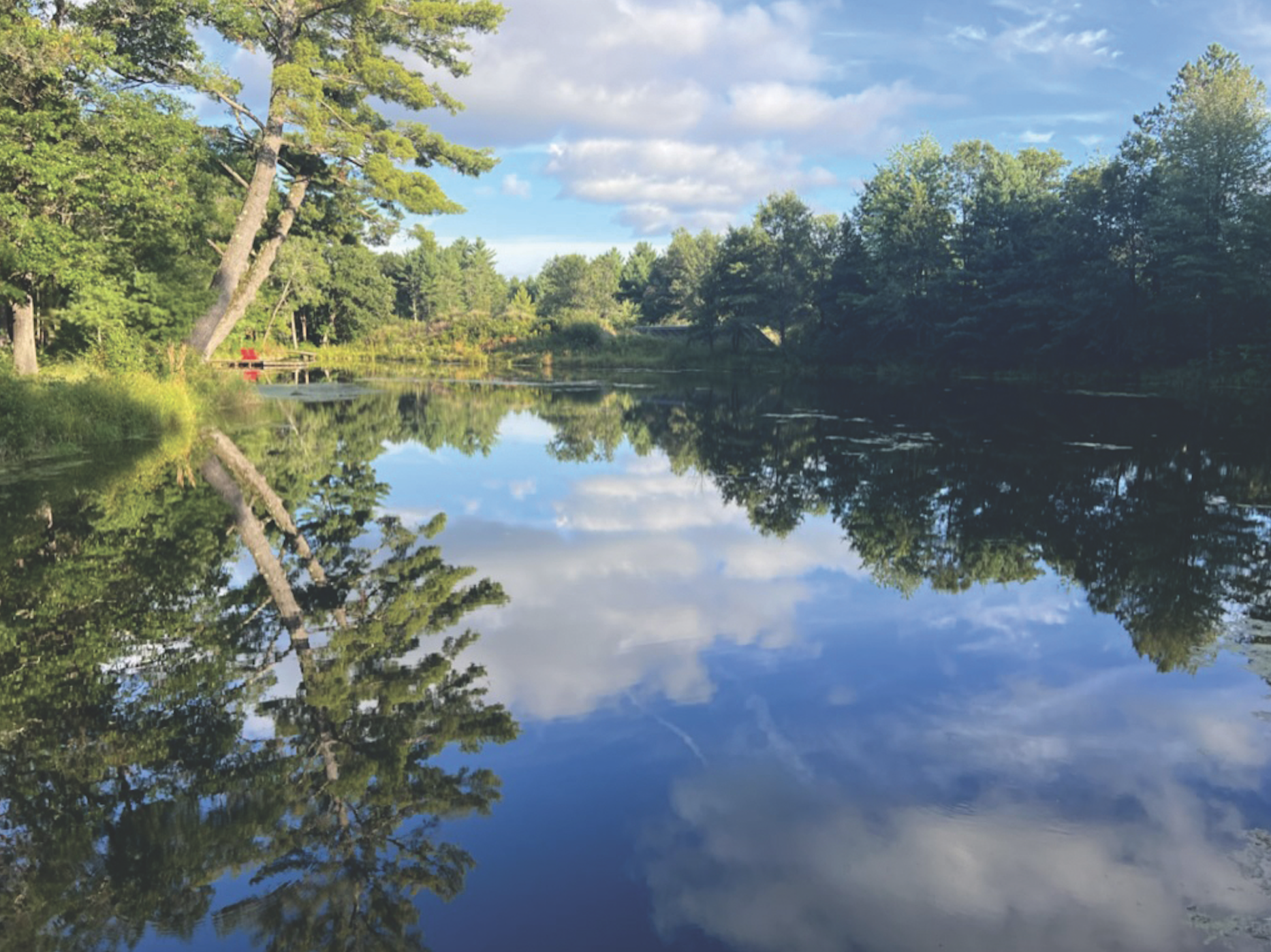From Devastation to Resort Destination
©One&Only Palmilla
Harnessing Nanobubble Technology for Oxygenation & Restoration
The health of aquatic ecosystems, whether ponds or lakes, hinges on the delicate balance of various factors, with dissolved oxygen (DO) playing a pivotal role.
Understanding the Sediment Layer
Both ponds and lakes possess a sediment layer, a blend of organic and inorganic materials settled at their bottom over time. The sediment layer can have important implications for the health and ecology of the lake. It can provide important habitat for benthic organisms, such as worms, snails and insect larvae, and can serve as a nutrient source for aquatic plants and other organisms.
However, the sediment layer can also serve as a sink for pollutants, such as heavy metals and organic contaminants from runoff, which can accumulate over time and potentially harm aquatic life and human health. In some conditions, the sediment layer can re-suspend and negatively impact the health of the lake causing fish kills. Low DO in the sediment layer leads to unhealthy lakes that are more susceptible to problems like muck, algae, foul odors, midge fly outbreaks and low clarity.
 Private trout lake in Wisconsin treated with Moleaer's nanobubble technology
Private trout lake in Wisconsin treated with Moleaer's nanobubble technology
©Moleaer
Numerous factors impact the health of a water body’s sediment layer, such as nutrient input, water chemistry, sedimentation rate, land use and contaminants. These factors interact intricately, making sediment health a complex but crucial aspect of aquatic ecosystem management.
Fish & Sediment Accumulation
Ponds hosting fish, particularly those with substantial fish populations, often experience the accumulation of organic matter at the sediment layer. This buildup occurs due to various factors, including uneaten fish food, fish waste, decaying plant matter and nutrient runoff from surrounding ecosystems. As fish feed and produce waste, organic particles settle to the pond bottom, gradually forming a layer of detritus. Over time, this organic sediment can contribute to nutrient loading and oxygen depletion in the water column, affecting overall pond health. Additionally, the decomposition of organic matter in the sediment layer consumes oxygen, further exacerbating the challenge of maintaining dissolved oxygen levels critical for supporting aquatic life.
Importance of Dissolved Oxygen at the Bottom of Lakes & Ponds
Getting dissolved oxygen into the sediment layer of a lake or pond is crucial for supporting the growth and survival of benthic organisms and other aquatic life. Oxygen enables these organisms to respire, breaking down organic matter and releasing nutrients into the water column. Without sufficient oxygen, the sediment layer can become anoxic or hypoxic, leading to the accumulation of toxic compounds like hydrogen sulfide and altering microbial communities.
Management strategies aimed at improving the oxygen levels in the sediment layer may include reducing nutrient input, injecting nanobubbles with a nanobubble generator and promoting the growth of submerged aquatic vegetation, which can release oxygen into the sediment through their roots.
.png?width=2378&height=1294&name=Moleaer%20Inc.%20(6).png) How nanobubbles help restore lakes and ponds by enhancing natural lake processes
How nanobubbles help restore lakes and ponds by enhancing natural lake processes
©Moleaer
Understanding Nanobubble Technology for Lakes & Ponds
Nanobubble technology from Moleaer helps deliver oxygen throughout the water column and at the bottom of the lake to the sediment layer by producing and delivering nano-sized bubbles of oxygen into and throughout the water column. These bubbles are so small that they are neutrally buoyant and remain suspended in the water column for an extended period of time, allowing the oxygen to diffuse into the lakebed.
.png?width=1866&height=1382&name=Moleaer%20Inc.%20(5).png) ©Moleaer
©Moleaer
How Oxygen Nanobubbles Help Restore Lakes:
Traditional lake aeration systems, such as diffused air or mechanical aerators, create larger bubbles that rise quickly to the surface of the water. These systems vertically mix the water column but are not effective at transferring oxygen, especially at the sediment layer. Moleaer’s nanobubble technology has been independently validated to have over 85 percent oxygen transfer efficiency (OTE), while many conventional aeration systems only have 1-3 percent OTE, depending on the technology.
.png?width=2386&height=1306&name=Moleaer%20Inc.%20(3).png) The benefits of nanobubble technology for improved lake ecosystem health
The benefits of nanobubble technology for improved lake ecosystem health
©Moleaer
By getting more oxygen to the sediment layer using nanobubble technology, the lake’s natural microbial communities can thrive, promoting the breakdown of organic matter and reducing nutrient cycling. This can help improve water quality and clarity by reducing muck and promoting a healthy lake ecosystem.
Success Story: Westin Hapuna Beach Resort
At the Westin Hapuna Beach Resort, maintaining a pristine koi pond was essential for enhancing their guests’ experience.
.png?width=1864&height=1222&name=Moleaer%20Inc.%20(1).png) Moleaer Kingfisher nanobubble generator at Westin Hapuna Beach Resort in Hawaii
Moleaer Kingfisher nanobubble generator at Westin Hapuna Beach Resort in Hawaii
©Moleaer
Months after installing Moleaer’s Kingfisher nanobubble generator, their hotel manager shared her satisfaction: “We have been absolutely thrilled with the improvements to the health of the plants and fish. After just a short time, the clarity in the pond increased dramatically, which has translated into a better experience for our resort guests, and the fact that it is an all-natural treatment is an added bonus!”
Moleaer has hundreds of lake and pond installations across the globe, from large urban lakes like Lake Elsinore to medium-sized lakes, stormwater basins and ponds. Nanobubble technology from Moleaer can be sized up or down to meet the specific needs of each waterbody.
.png?width=1470&height=1394&name=Moleaer%20Inc.%20(4).png) Nanobubble generation barge at Lake Elsinore, California
Nanobubble generation barge at Lake Elsinore, California
©Moleaer
Supporting Lake & Pond Restoration with Sustainable Nanobubble Technology
Nanobubble technology stands as a beacon of hope for pond and lake managers seeking sustainable solutions to enhance water quality and ecosystem health. By addressing the critical issue of dissolved oxygen at the sediment layer, nanobubbles pave the way for healthier, more resilient aquatic environments, ensuring enjoyment for generations to come.
Chris Stephan
Global Director of Surface Water at Moleaer
Email: chris@moleaer.com
www.moleaer.com
 Read More
Read More
Environmental Design is in the Business of Saving Trees—By Moving & Replanting Them

PROJECT DETAILS Cost: $500,000 | Size: 2 acres | Timeline: 1 year